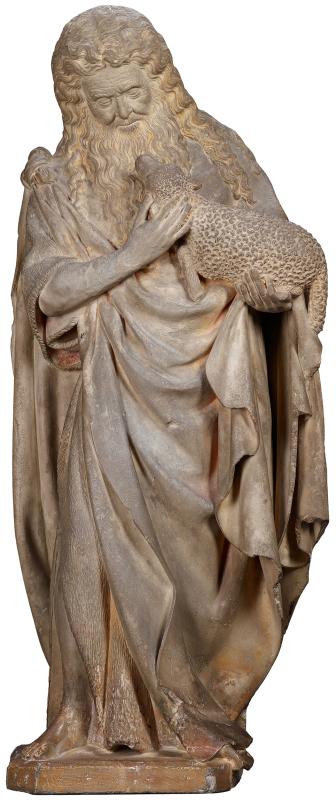
This statue reveals the impact of Sluter, a sculptor who was born in Haarlem and arrived at the Burgundy court in Dijon in 1385. The court was a center of artistic production and patronage, known especially for the naturalism of its art. The careful differentiation of textures and attention to surface detail reflect Sluter's influence and suggest that the statue is the work of a Burgundian sculptor active during the fifteenth century.
Two holes on St. John's head probably indicate the former presence of a halo. Recalls the influence of the statues of the four prophets placed around the foot of the Calvary called the "Well of Moses" in the Carthusian monastery of Champmol, Dijon.
St. John standing and holding a lamb in his arms.
